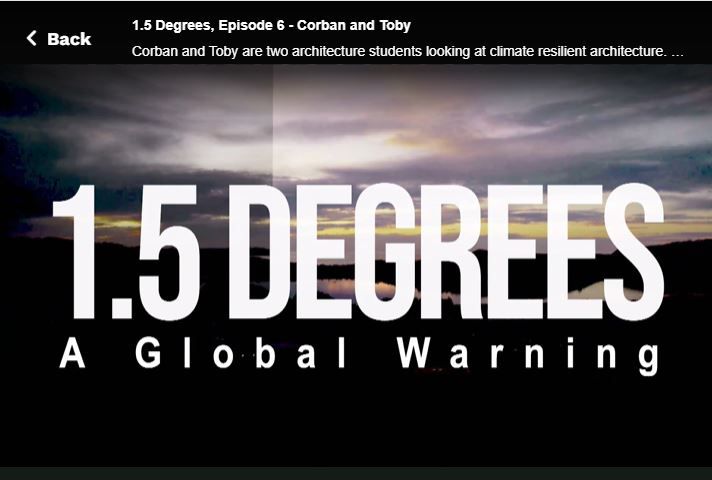RTA Studio founder Richard Naish co-tutors a 4th-year course on climate-resilient architecture at the University of Auckland and two of his students are the subjects of an episode of 1.5 Degrees: A Global Warning, a series now screening on demand on Māori TV.
Corban Richter (a recipient of the RTA Studio Award for Māori Architecture Students at the University) and Toby Whata both have firsthand experience of the devastation that extreme weather events can cause. Corban (Te Whānau ā Apanui, Taranaki) was horrified as Gisborne whanau lost their homes to the inundation wrought by Cyclone Gabrielle. Down at the boat club, waka were destroyed and left stranded in the trees.
The full force of planetary perturbation was also brought home to Toby (Ngāti Pikiao, Ngāti Kawiti, Ngāti Tamateatutahi), who lives in Grey Lynn, when he saw houses in his own suburb submerged following the Anniversary Day floods.
The 14-week programme that Rich tutors is partly devoted to the master planning of vulnerable areas such as the Auckland basin that stretches from Coxs Bay through to Grey Lynn Park, where once a river ran, and part focussed on the design of climate-resilient buildings that can mitigate dynamic natural forces.
Integrating Māori beliefs such as the life force/mauri of bodies of water and construction techniques such as mimiro (a post-tensioning system of building) was fundamental within the course and Rich’s brother, professor Tim Naish, a climate scientist at Victoria University of Wellington, facilitates a workshop on the facts and figures that underpin these real-world events.
The 1.5 degrees episode traces the thought pathways that Toby and Corban follow to make sense of such natural hazards and then design a concept for two buildings – a kura (school) and a whare waka (with storage and papakāinga-style accommodation).
As Rich says, the prospect of design that matches our changing world belongs to these aspiring architects. Projecting 100 years into tomorrow is vital. The thoughtful young people showcased in the series indicate that architecture made for an unpredictable future is in safe hands.
